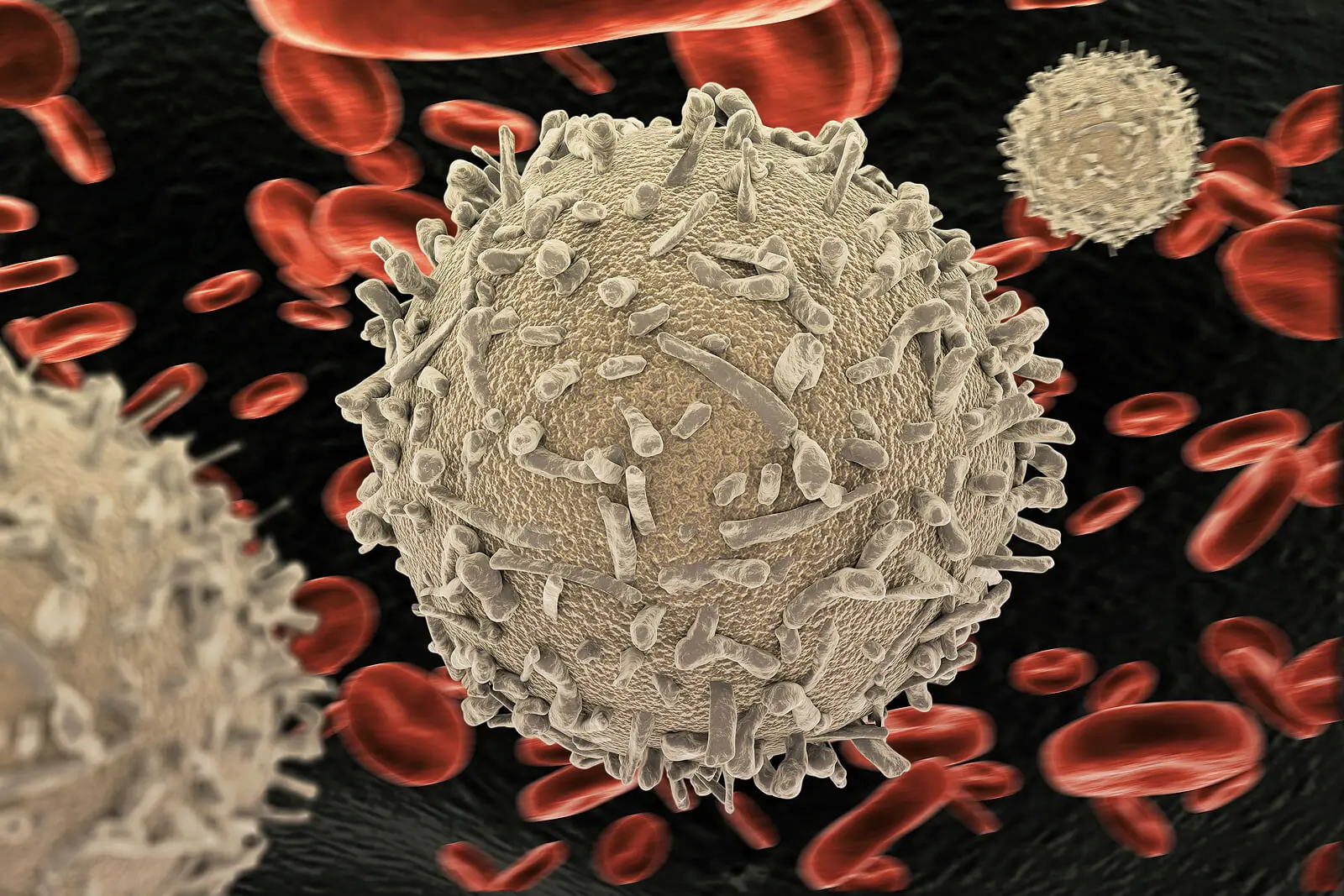Waldenström Macroglobulinemia: What Is It?


Written and verified by the doctor Mariel Mendoza
Waldenström macroglobulinemia is a cancer of the cells of the blood system. It’s characterized by the proliferation of B lymphocytes (cells that are part of white blood cells and are responsible for antibodies) with excessive production of immunoglobulin or monoclonal M antibody (derived from a single cell type) and infiltration of the bone marrow.
It’s a chronic and rare disorder. Its incidence is estimated to be 3 patients per million people per year.
Its clinical manifestations are varied, ranging from nonspecific signs to those associated with changes in the blood due to exaggerated antibody production. Fatigue, related to chronic anemia, is the most common symptom.
Bone marrow, blood cells, and causes
Bone marrow is located inside the bones and is the place where blood cells (red blood cells, white blood cells, and platelets) are produced.
B lymphocytes are part of the white blood cells and are responsible for producing antibodies. Antibodies are proteins responsible for directly attacking foreign agents that invade the body and signal an alarm.
In the case of Waldenström macroglobulinemia, there’s an exaggerated proliferation of B lymphocytes (plasma cells) that produce monoclonal antibodies of class M.
To date, the specific cause of Waldenström macroglobulinemia isn’t yet known. It’s considered a sporadic disease.
It’s associated with familial predisposition in up to 20% of cases (related to first-degree relatives) and with specific chromosomal deletions (present in cases where there’s no familial predisposition).

Symptoms of Waldenström macroglobulinemia
Waldenström macroglobulinemia is a rare chronic disorder. Its incidence is low, as mentioned above, but is higher in white people.
It most commonly develops between the sixth and seventh decade of life. The mean age of diagnosis is 65 years and it predominates in males over females.
The estimated survival of Waldenstrom macroglobulinemia is only 5 to 6 years.
The symptoms are varied, however, the most common are the following:
- Chronic anemia
- Thrombocytopenia
- Nasal and gum bleeding
- Presence of lymphadenopathy
As far as non-specific signs are concerned, they range from fever without focus, weight loss greater than 10%, and profuse night sweats, as well as general symptoms (malaise, fatigue, anorexia).
Due to the exaggerated production of immunoglobulin M in the bone marrow, the blood becomes denser, so the flow is slower and there’s a greater chance of obstruction. This is known as hyperviscosity syndrome.
In addition, this leads to enlargement of the lymph nodes (lymphadenopathy), liver (hepatomegaly) and spleen (splenomegaly). There’s also a decrease in the production of other white blood cells (leukopenia), red blood cells (anemia), and platelets (thrombocytopenia).
Anemia also occurs because M antibodies attach to red blood cells and cause them to rupture.
In Waldenström macroglobulinemia, hyperviscosity syndrome creates symptoms such as the following:
- Headaches
- Nasal bleeding
- Vision disturbances
- Raynaud’s disease
- Renal insufficiency
- Retinal hemorrhage
Diagnosis of Waldenström macroglobulinemia
The diagnosis of Waldenström macroglobulinemia is made by the detection of M antibodies in blood with a concentration greater than 3 grams per liter. In addition, plasma cell proliferation must be demonstrated on bone marrow biopsy.
A complementary immunofixation test is performed to verify that the M antibody is derived from a single cell type (monoclonal).
Hemoglobin levels of 10 grams per deciliter may be present initially, representing mild anemia. This chronic form is well tolerated by patients.

Read more: A New Blood Test that Detects Tumors Before Symptoms Occur
Treatment will depend on symptoms and evolution
Waldenström macroglobulinemia tends to progress very slowly, over many years, before requiring treatment. That’s why in some patients (if they have no symptoms or significant changes) no treatment is recommended.
When treatment is resorted to, monoclonal antibodies or alkylating agents are used alone or in association with chemotherapy. The latter is recommended when there are many monoclonal antibody-producing cells in the bone marrow or there are many antibodies in the blood.
In cases where the hyperviscosity syndrome of Waldenström macroglobulinemia is severe, plasmapheresis may be used. In this procedure, blood is extracted, processed in a machine that removes the abnormal proteins and then reintroduced into the body. In this way, the antibodies are removed and the viscosity is reduced.
Although there’s little experience, some patients may benefit from bone marrow transplantation.
A pathology that’s difficult to diagnose
If Waldenström macroglobulinemia is suspected, a specialist physician (hematologist) should be consulted for diagnosis. The initial manifestations are very unspecific, so it’s common for several types of cancer to be taken into account before the definitive verdict.
Although the estimated survival after diagnosis seems short, when there are no symptoms the evolution takes several years longer.
All cited sources were thoroughly reviewed by our team to ensure their quality, reliability, currency, and validity. The bibliography of this article was considered reliable and of academic or scientific accuracy.
- Grietz M, Fonseca R, Rajkumar R. Waldenstrom’s Macroglobulinemia. The Oncologist 2000;5. Disponible en https://theoncologist.onlinelibrary.wiley.com/doi/pdfdirect/10.1634/theoncologist.5-1-63
- Leukemia and Lymphona Society. Información sobre la macroglobulinemia de Waldenstrom. LLS 2015. Disponible en https://www.lls.org/sites/default/files/file_assets/FS20S_Waldenstrom%20Fact%20Sheet_Spanish_8_15FINAL.pdf.
- Khosravi Shahi P, Castillo Rueda A, Díaz Muñoz de la Espada V. Macroglobulinemia de Waldenström. An. Med. Interna 2006; 23( 6 ): 291-293. Disponible en: http://scielo.isciii.es/scielo.php?script=sci_arttext&pid=S0212-71992006000600013&lng=es.
- Romaní F, Cuadra J, Atencia F, Canelo C. Macroglobulinemia de Waldenstrom; comunicación de un caso. An Fac Med 2008;69(2). Disponible en https://revistasinvestigacion.unmsm.edu.pe/index.php/anales/article/view/1153.
This text is provided for informational purposes only and does not replace consultation with a professional. If in doubt, consult your specialist.








